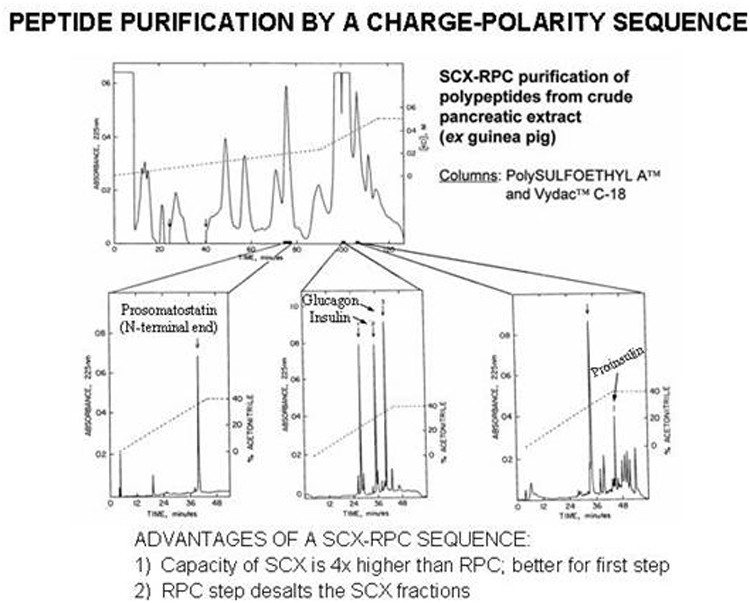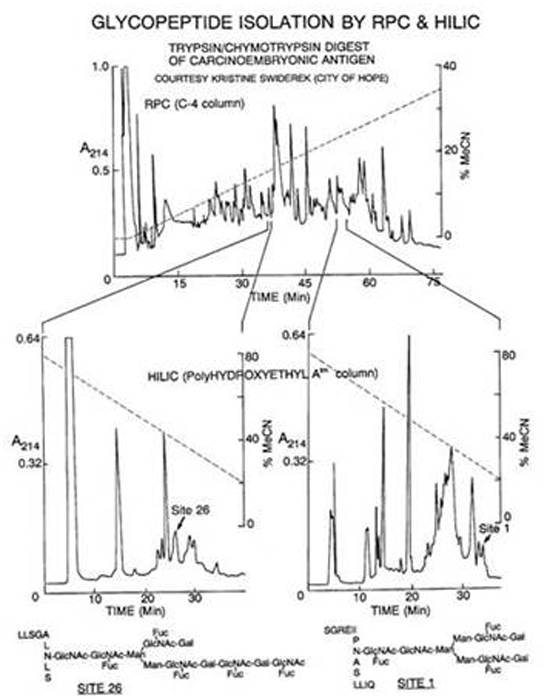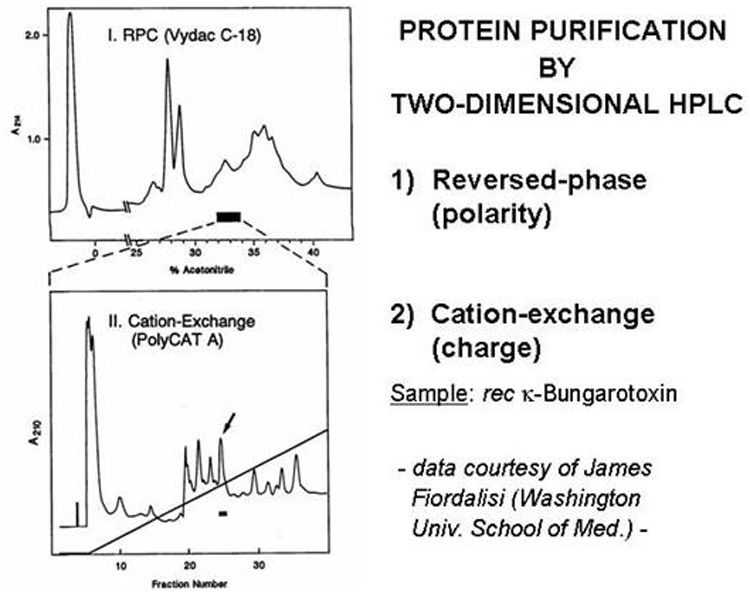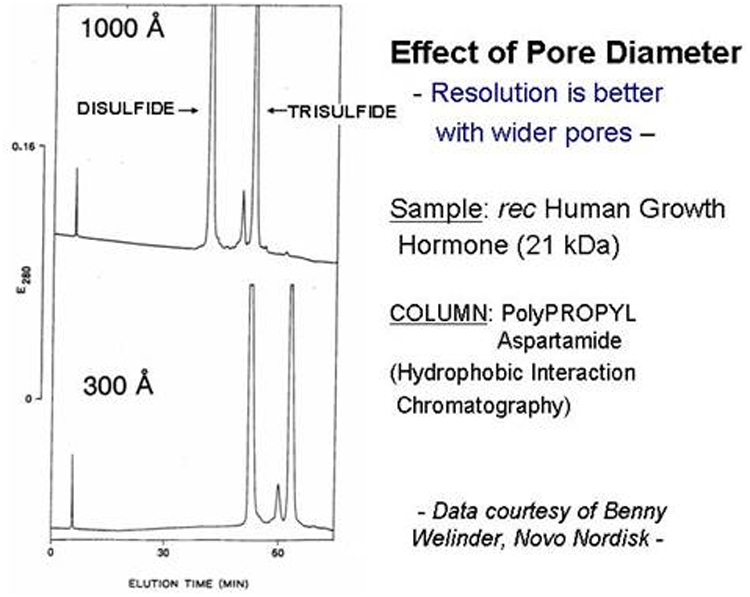KOREAN ENGLISH
주요취급품목
PolyWAX LPTM
PolyGLYCOPLEX ATM
PolyHYDROXYETHYL ATM
SDS Removal
PolyMETHYL ATM
PolyPROPYL ATM
TopTipsTM/Nu TipsTM
분취용 HPLC컬럼
Flash Cartridges
Flash LC 시스템
Detectors
Chromatography Gels

Isolation of Proteins and Peptides from Extracts and Natural Products
Generally, any single protein or peptide
can be isolated in >90% purity from any crude extract by the use of two
complementary modes of HPLC in sequence. If purity > 98% is desired, it may
be necessary to use three modes in sequence.
PEPTIDES:
SCX-RPC: Almost all peptides will be retained by our PolySULFOETHYL
A™ material at pH 2.7-3.0 and can be separated by charge differences. The
fraction of interest is collected and further resolved by RPC. Peptides which
coeluted with the peptide of interest in the SCX run and which presumably have
similar charge-to-mass characteristics will be unlikely to have similar
polarity as well and will be separated in the second dimension.
Order PolySULFOETHYL A™ now.
The SCX step should be performed first for
the following reasons:
1) Ion-exchange columns have 4x higher binding capacity than a RPC column of
the same size.
2) The RPC step can conveniently eliminate the salt from the SCX step.

RPC-HILIC: This separates peptides first by their
hydrophobic and then by their hydrophilic residue differences. Capacity is less
than with SCX, but either mode can be used with mobile phases compatible with
MS.

RPC-HILIC-SCX: This sequence was used to obtain
polypeptides of extremely high purity from crude pituitary extracts for
correction of mistaken sequence data in the literature (actually, a
SCX-RPC-HILIC sequence would have been more convenient). Ref: K.F. Faull et
al., Neuropeptides 32 (1998) 339.
PROTEINS:
Ion-exchange and hydrophobic interaction chromatography (HIC) are useful for
most protein applications, particularly if protein tertiary structure and
function is to be preserved (not a concern in proteomics). The capacity
and resolving power of SEC is much less than for these modes, making it useful
only in special cases. The organic solvents used for RPC and HILIC also make
them useful only for special cases. Small proteins tend to work well with RPC
while proteins < 30 KDa and membrane proteins frequently work well with HILIC.
RPC-WCX: This combination worked well for this
small protein. It would have been more convenient to use a WCX-RPC sequence.

HIC-IEX: This is a popular sequence because of
the convenience of use of HIC to "capture" dilute proteins from a
large volume. Actually, it might be more convenient to reverse the sequence.
This would permit the IEX fractions to be applied directly to the HIC column
upon addition of additional salt to promote binding. This separation first by
polarity and then by charge is a particularly powerful combination and should
be considered for fractionation of complex protein samples in proteomics
analyses.
[Below] 2g of crude venom from copperhead
snake (Agkistrodon contortrix contortrix)

|
Hydrophobic interaction chromatography (HIC) fibrolase PolyPROPYL A™ column |
|
|
Hydroxyapatite HPLC of peak with activity collected during HIC step. |

PolySULFOETHYL
A™, PolyHYDROXYETHYL A™, PolyCAT A™, PolyPROPYL A™,
and PolyPROPYL Aspartamide™ are trademarks of PolyLC Inc.
주소
서울특별시 송파구 충미로 5 송파한화오벨리스크 C동 415호
연락처
전화번호 : 02-3012-9003 팩스번호 : 02-3012-9010
intertech9@naver.com
사업자등록번호
215-87-83507 대표이사 : 이홍근
